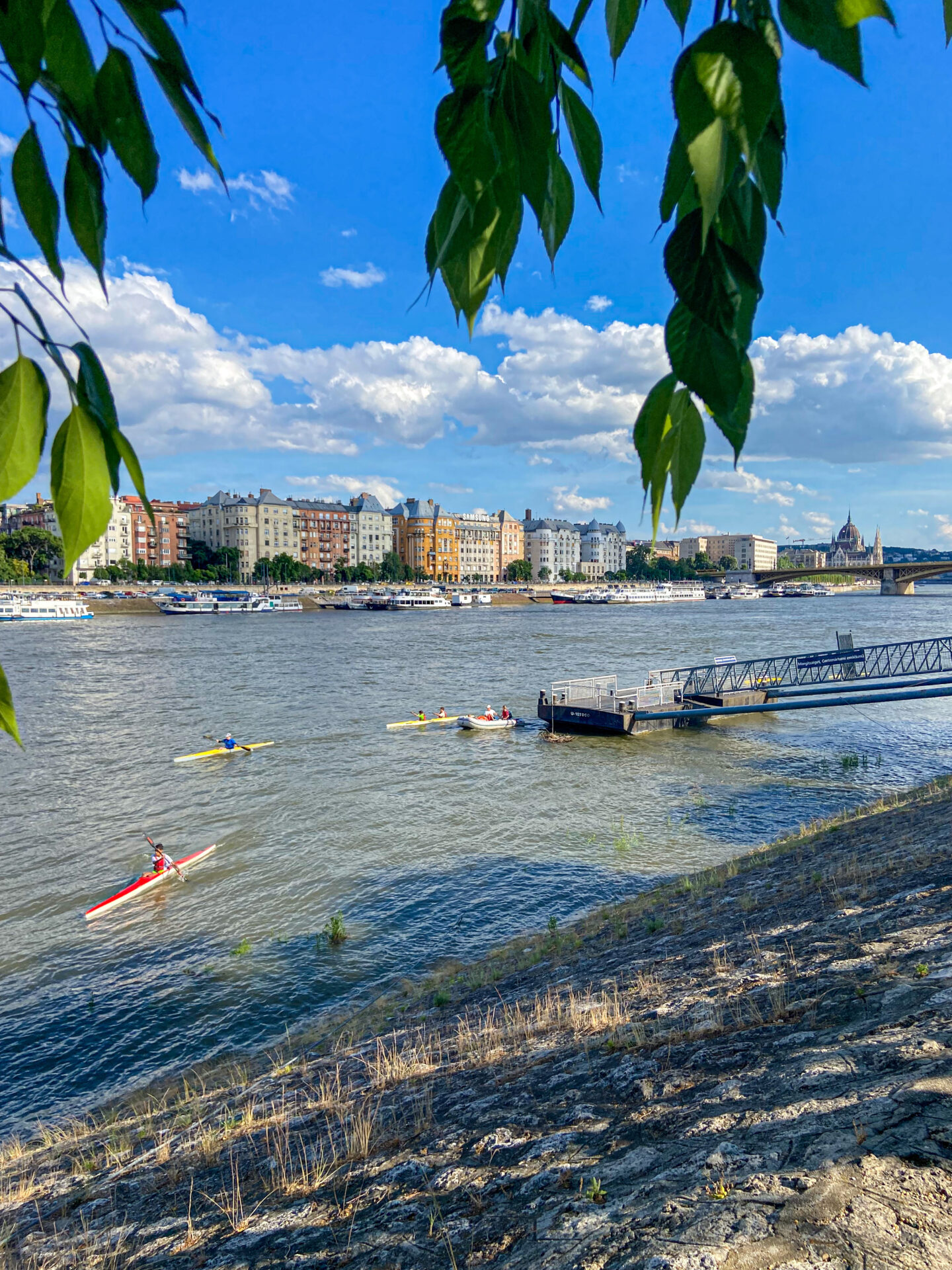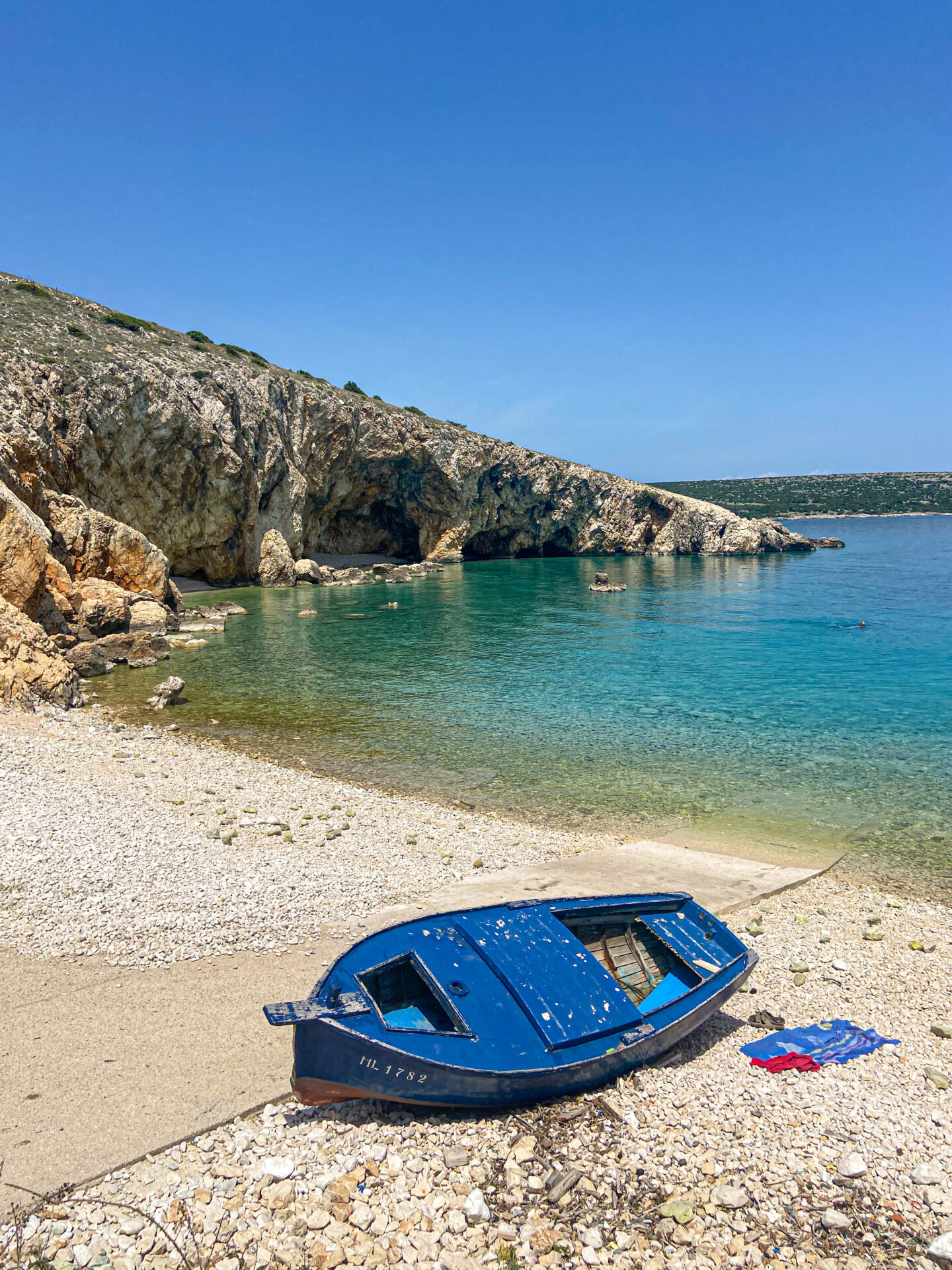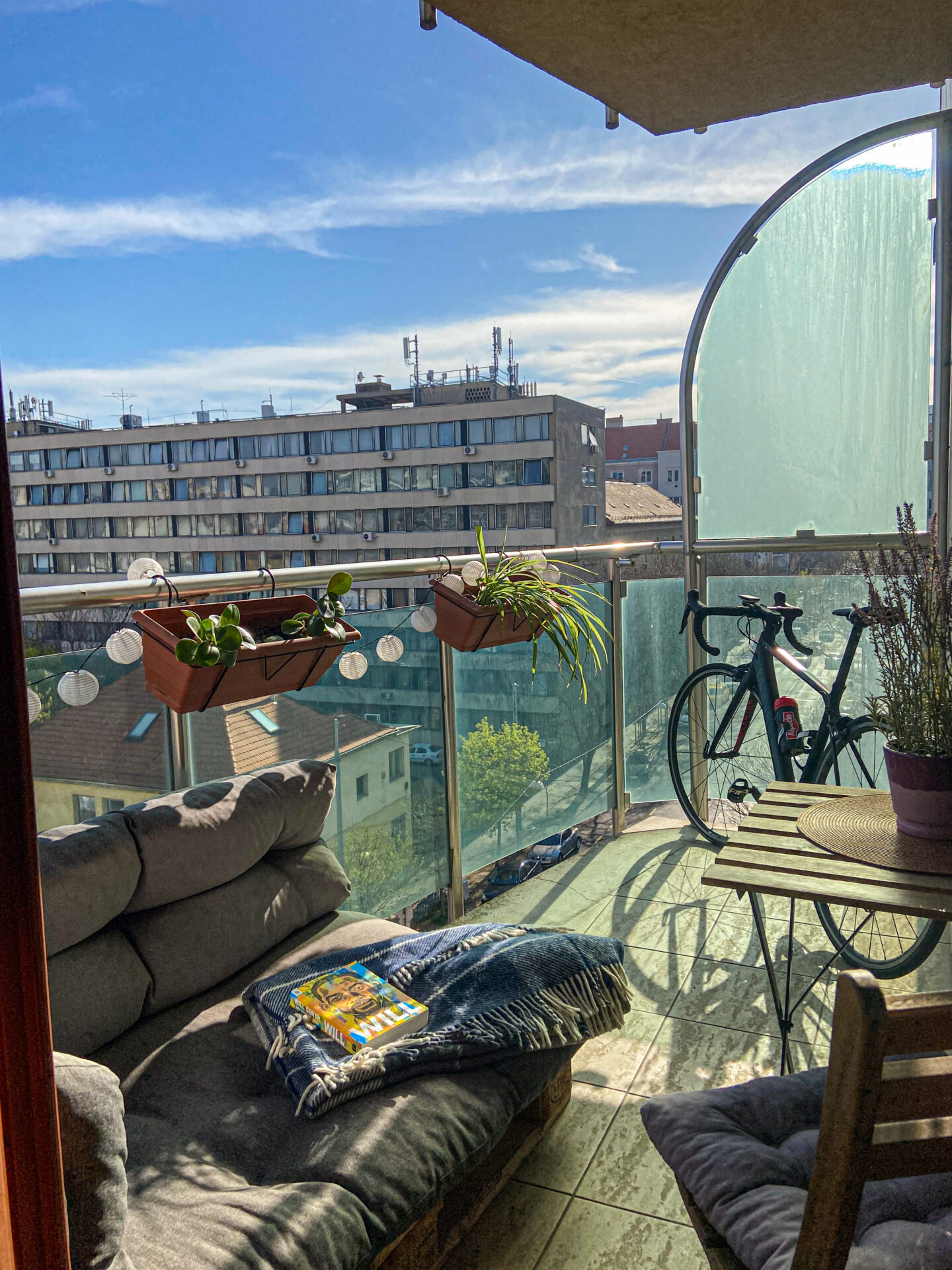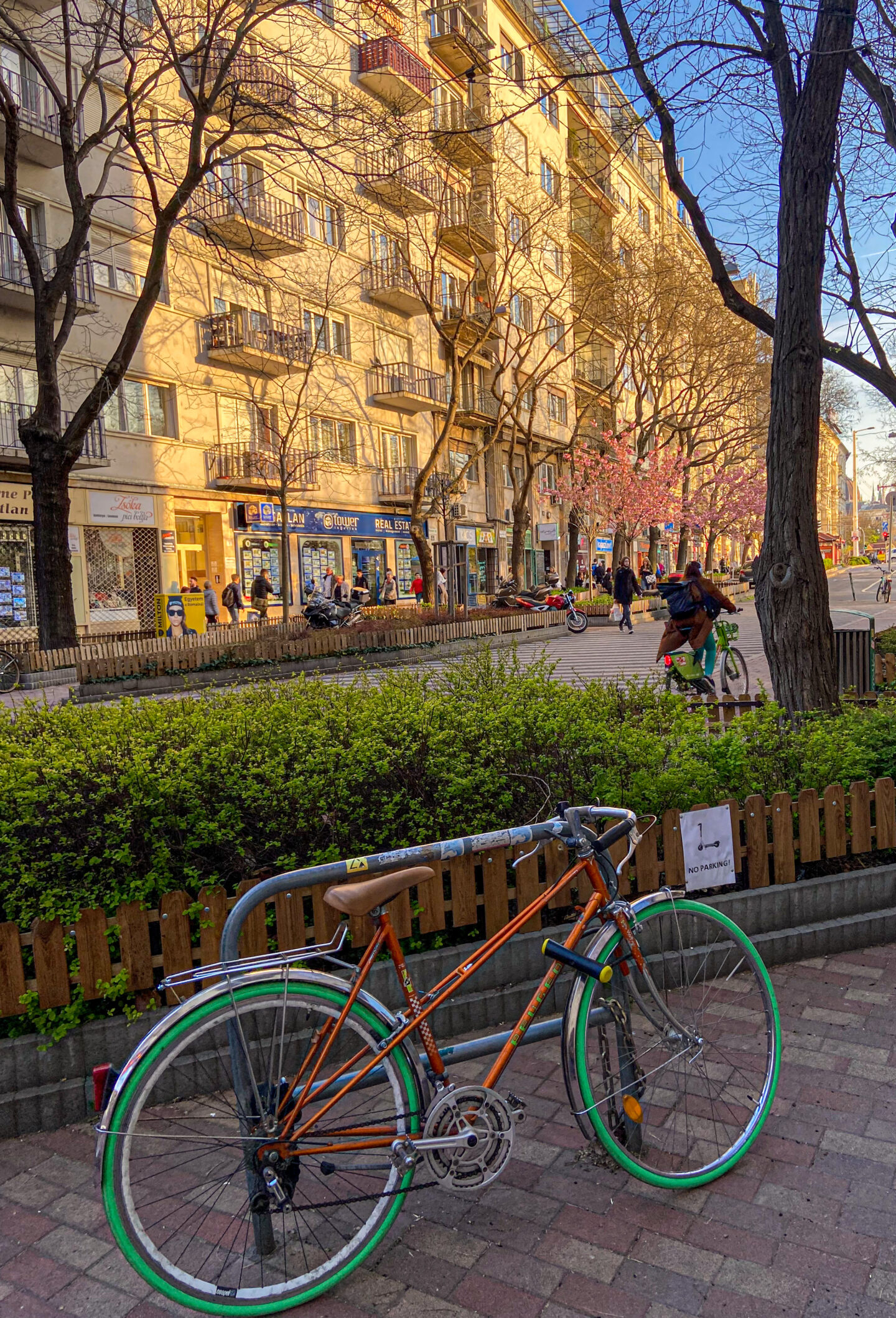1. Introduction:
Morning sun is shining on my face, battling the cold breeze of dawn and heating up my cheeks. 8 am, sitting on my balcony, surrounded by the urban jungle and a selection of tropical plants, listening to my favorite music which is hardly overshadowing the noise of the construction site down the alley. Feels like holiday, but it is workday. Ten minutes walk to the office, a couple of days per week. I don`t have to go there, I can.
What is financial freedom? For me it is the feeling to be able to do whatever I want with my day, every day. Nothing is a must, everything is optional. No obligations. No liabilities. My favorite novel from Jonathan Franzen has the same name: Freedom. There are different forms of freedom. This one is about financial freedom – financial independence (FI). And the different concepts of FI. But let`s start with a general introduction.
“The three most harmful addictions are heroin, carbohydrates, and a monthly salary.“ Nassim Nicholas Taleb
If you could decide between having endless money or having endless time – what would you choose? Like most people you probably value time over money. Why? Because money is unlimited, time is not. And you cannot buy more time with all the money in the world. Right? Wrong.
The key to understand this is to realize that you can actually buy back time of your life – just by refusing to spend money. Spending less money now equals more time for you to do whatever you want in the future. So with every purchase you have to ask yourself, is this purchase worthy enough to me to give up my future lifetime? And if you value time over money most of the time the decision is pretty simple – do not spend your money (equals lifetime) on stuff that will give you nothing but short term happiness and long term obligations.
2. Concepts of FI:
- Financial Independence – Having passive income that fully covers expenses.
- Financial Independence, Retire Early (FIRE) – Enough invested to live from passive income and not having to work anymore.
- Lean FI – Live from passive income – fully covers monthly expenses (frugal living)
- Fat FI – Live from passive income – covers more than monthly expenses (luxurious expenses).
- Slow FI – Not retired, but the freedom to use invested/saved money to increase financial freedom, e.g. mini-retirement, FU money decisions, leave high-stress work environment etc.
- Coast FI – Enough invested to not need to save any more money for retirement – investment amount will grow until normal retirement date.
- Mini-Retirement – Achieving the freedom to take a break from work for a specific timeframe.
- Barista FI – Enough invested to leave work for a lower paying job or part-time job – partly financed by passive income.


Defining Financial Independence (FI)
Let´s define Financial Independence. Financial Independence is when you have passive income that can cover your full expenses. Once you are planning to retire, you will have expenses and no longer be able to earn money through work. So, you’ll need passive income to cover those expenses. Usually this is your pension payment which you accrued during your lifetime of work. But you don`t have to wait until the age of 65 or 70 to reap what you have sown. If you reach financial independence earlier, you can choose to quit working earlier or use your financial freedom in another way.
There are different ways to approach reaching financial independence:
- Investing, and
- Generating passive cash flow
Investing will generate one passive income flow as well. Many choose to invest in the stock market. There are two main ways that can generate income from the stock market:
- Dividends – buy stocks that provide dividend payouts. Before reaching FI, reinvest these dividends (compound interest). After FI, the investments can be withdrawn to cover annual expenses.
- Selling shares – The other way to generate income from stocks is by actually selling shares. From the trinity study, there is a 4% rule of thumb that says that for a 30-year retirement, you can withdraw 4% of your portfolio each year and never run out of money. Since the market will grow by approximately that rate (or more) each year, you will typically be withdrawing the gains.
Others choose to invest in multiple passive cash flows. There are many ways that people generate passive cashflow:
- Real Estate Investing
- Create a digital product to sell online
- Affiliate Income
If you are interested in creating passive income streams I recommend the book „Passive Income, Aggressive Retirement“ from Rachel Richards. I will cover it together with other FI books in a separate blog post in this series.
What is Financial Independence Retire Early (FIRE)?
Someone might say they have “FIREd” when they have reached financial independence and subsequently decided to retire early. There are different definitions on what early retirement means. It could mean choosing to never earn another cent ever again. For others, it means choosing to do only things you truly want to do, and if you generate income from it, so be it. For me it means having the option to walk away from paid work I don`t enjoy and taking my time to find more meaningful tasks that I like to do (Work Optional).
There are different stages or levels of financial independence. The best summary I have found in Grant Sabatiers book on Financial Freedom:
Seven levels of financial freedom
1. Clarity
when you figure out where you are and where you want to go
2. Self sufficiency
when you earn enough money to cover your expenses on your own
3. Breathing room
when you escape living paycheck to paycheck
4. Stability
when you have six months of living expenses saved and debt repaid
5. Flexibility
when you have at least two years of living expenses invested
6. Financial Independence
when you can live off the income generated by your investments forever so work becomes optional
7. Abundant wealth
when you have more money than you`ll ever need
Financial Freedom – A proven path to all the money you will ever need (Grant Sabatier)
Now let`s have a look at the other concepts of Financial Independence.
What is Lean FI(RE)?
Lean FIRE is distinguished from general financial independence in one way. People pursuing Lean FIRE spend less than the average. This means that people who are pursuing Lean FIRE are generally quite frugal. If we use the 4% rule of thumb, people pursuing Lean FIRE could decide to retire early with less than $1 million dollars in their investments. For someone who spends $40,000, they’d need approximately $1 million invested. For someone who spends $20,000, they’d need approximately $500,000 invested to be able to retire early and hopefully never work again.
My current approach is focused on Lean FIRE and Geo-Arbitrage. I`m planning to keep my annual expenses below $12,000-$15,000. While this is definitey unachievable in high cost of living countries, there are many beautiful and sunny countries across the globe where you can live comfortably on these expenses (Portugal, Mexico, Thailand, Hungary…just to name a few). If you want to stay in your high cost of living area and you don`t own a fully paid rental to live in, you might want to go with the Fat FIRE concept.
What is Fat FI(RE)?
Fat FIRE is the opposite of Lean FIRE. According to Physician on FIRE, who created the Fat FIRE concept, people are pursuing Fat FIRE if they plan to retire and live on more than $100,000/year. This means that financial independence is for people at all spending levels. It isn’t just for the ultra-frugal, as the media might lead us to believe. People who want to spend more than $100,000/year can still reach FI. They will simply need a larger portfolio. If you use the 4% rule, someone who wants to spend $100,000/year will need a retirement portfolio of $2.5 million. Accounting for the current levels of inflation, probably even more.


Concepts within the FIRE Movement NOT Focused on Early Retirement
There has also been a growing community of groups who are pursuing financial independence but they aren’t sprinting toward the finish line. They are focused on designing lives that they love along the way to FI.
What is Slow FI?
The Slow FI concept has been created by The Fioneers. One of my favorite blogs on FI, which also inspired me to write this FI series. I have adopted many ideas from The Fioneers into my personal journey. Slow FI is what comes closest to my current path of FI. Below excerpt from their blog:
„Slow FI is a mindset or approach to financial independence that focuses on using the financial freedom you gain along the way to FI to design your ideal life. If you are pursuing financial freedom for the purposes of living a better life that is more aligned with your values (and you’ll eventually retire someday), you are pursuing Slow FI.
Slow FI can take many forms to improve their quality of life by:
- Finding a job they enjoy more (even if it pays less)
- Working fewer hours
- Becoming a freelancer
- Starting their own business
- Working part-time
- Negotiating full-time remote work
- Taking a sabbatical
- Becoming semi-retired
Slow FI means you are finding a better balance between your financial goals and your quality of life.“
What is Coast FI?
Coast FI is reached when you no longer need to continue to save for traditional retirement. You’ve saved and invested enough that if you leave it to grow, it will provide you with a comfortable traditional retirement (excluding any pension payments, 401k etc.).
When you reach this point, you could choose to only cover your actual expenses with active income. This means you could decide to generate less income which provides you with more time to focus on passion projects and activities that don’t necessarily generate income. To calculate your own Coast FI number, you need to incorporate two pieces of data.
- Your annual expenses
- The time horizon you have before the traditional retirement age (i.e. the amount of time your investments have to grow).
There are some great Coast FI calculators on available on the internet to calculate your actual number. Again, current levels of inflation will be a challenge for this concept.
What is Mini-Retirement?
Mini-retirement/Semi-retirement is the step that you can take between Coast FI and full FIRE. Once you reach Coast FI (and if you continue to save and invest), you will soon get to a place where you can track how much active income you’d still need to generate.
However, you may want to take some time off from the fast track to FI and enjoy your time here and now. Nothing is promised. And especially in the unprecedented times we are living in, you`ll never know what the future will hold. A Mini-retirement allows you to take calculated breaks from paid work, with the intention to go back after a defined time period. This could be a sabbatical, few months of parental leave, but also taking off 3 to 5 years to travel the world and/or pursue a passion project.
Maybe during your Mini-retirement you are able to generate additional passive income streams with your passion project or side hustle, so you are able to fully retire without going back to your old job. If not, it is always good to have the option to go back to paid work and to pursuing the classical path to FI.
Of course there is a risk and going back to the old job or finding another job can be difficult. Sometimes it can be easier to stay in a high paying job for a few more years and invest enough to fully retire instead of taking mini-retirements on the way. But this depends on each individual journey.
What is Barista FI?
Barista FI is a type of semi-retirement. Barista FI is when you take a part-time job that you enjoy that can provide you with a paycheck, health insurance, or other benefits. The term Barista FI was originally created because Starbucks offers benefits to part-time workers. You do not need to literally get a job as a barista to be considered Barista FI. Any job that you enjoy could put you in the Barista FI category of semi-retirement.
I´m planning to take a couple of mini-retirements or sabbaticals on the path to FI. Just because I have already figured out that there won`t be a life after FI without work for me. So I´d rather jump ship at work when I lost my interest instead of staying in a job that makes me miserable, just to earn money for my retirement. For me the journey is more enjoyable with taking scenic stops on the way.
Understanding Slow/Barista/Coast FI helped me realize that I could start using financial freedom to improve my life today. I realized that I no longer needed to save for traditional retirement and it is possible to take my foot off the gas and intentionally design a life I love – choose where I want to live & work, for how long and with whom.
I`ve made many decisions to optimize my quality of life. Yet, surpisingly it hasn’t slowed down the path to FI as much as expected. And it turned out way more fun as well.


3. Other FI topics – Part I: FU$
Fuck You Money provides the financial and emotional safety net needed. Fuck You Money (also known as FU Money) means that you have enough cash on hand in an emergency fund or liquid investments to walk away from a bad situation or take advantage of an opportunity.
„That’s your fortress of fucking solitude. That puts you, for the rest of your life, at a level of fuck you. Somebody wants you to do something, fuck you. Boss pisses you off, fuck you! Own your house. Have a couple bucks in the bank. Don’t drink. That’s all I have to say to anybody on any social level. Did your grandfather take risks? I guarantee he did it from a position of fuck you. A wise man’s life is based around fuck you.” (The Gambler)
An article on Lifehacker defines FU money as “any amount of money allowing the infinite perpetuation of wealth necessary to maintain a desired lifestyle without needing employment or assistance from anyone. F–K you money is just financial independence, it’s simply financial freedom, it’s Early Retirement, it’s having enough money to choose the life you want to live.” FU Money is simply having enough cash on hand to be able to put yourself first right now.
It doesn’t have to mean that you can say “F-You” to every employer or bad situation for the rest of your life. It means you can do that for the time being without significant negative impacts on your quality of life or future plans. FU Money is simply one milestone along the path to full financial independence. As shared above, there are two main reasons why you want to have FU Money.
- To walk away from a bad situation without needing to worry (too much) about the financial ramifications.
- To take advantage of an opportunity.
It doesn’t mean that you would literally say, “FU” to someone. Instead, it means that you are making a choice that’s right for you. You don’t need to take into account the ideas about what other people think you should do. You also don’t need to take into consideration the outcome for the person or situation that is causing your unhappiness.
Or as Coryn Ellison in The Morning Show summarized it wonderfully: „What you’re misunderstanding is how little I care about losing this fucking job. I’ll get another one. I don’t need this job. The only reason I’m doing it is because it’s fun. I’m very, very good at it, and it’s easier to get laid when you’re employed.“
The trick about FU Money is that it’s both a number and a feeling. To have FU Money, you definitely need to be in a position where you have a financial safety net. I define my FU money as having at least 2 to 3 years of expenses saved, so I could take a break from work, do a sabbatical on Bali and enjoy life while thinking about my next move.
At the same time, to consider your savings as FU Money, you also need to feel like you can use it. If you don’t feel like you can use it, it’s not FU Money. If it won’t give you the confidence to walk away from a bad situation, it certainly won’t allow you to take advantage of an opportunity.
The amount of money you need to feel like you can say “FU” will, therefore, be different for everyone. When figuring out your number, you’ll want to think through your responsibilities. Does anyone else depend on you financially? Does your career provide an unpredictable income? Do you have income from a side hustle that you could scale up if needed? Do you work in an in-demand field that would make it easy to find a new job?


4. And the story goes on and on and on…
I came across FIRE right before COVID during one of my work travels in 2019 (The pursuit of Financial Freedom – Year 1 (2020 – The COVID awakening). Meaning I`m still in the early stages of my journey and constantly exploring new ways to pursue FI (Slow FI – When FOMO meets YOLO). However, it still amazes me how quickly the shift in my mindset has changed my life and transformed it into one big adventure (The pursuit of financial freedom – Year 2 (2021 – The COVID Aftermath).
Traveling the world and relocating to different countries has opened my eyes about the endless possiblities of FI. There is not that one perfect concept. There is only the pursuit of Financial Freedom. And every concept can lead to this goal. But we should never forget, that the real goal of FI isn`t the destination, it is the journey. Designing and living a more enjoyable life while pursuring financial independence, not being miserable until achieving it.
A huge part of the movement to Choose FI is to share experiences and knowledge with the community to allow everyone to live a better and more meaningful life. That is why I have decided to put together pieces of my story in this blog and I will continue to do so in a multi-part series on FI (below summary of whats coming up next).
My journey? It will be a combination of Lean FI, Slow FI, Geo-Arbitrage, FU-Money, Relocations and Mini-Retirements. Being and becoming financially independent while traveling the world and enjoying life as much as possible. A patchwork of various FI concepts which I combine into my own: Travel FI (©FIRExplorer). And the pursuit of financial freedom goes on and on and on…
The FI Series:
- Part I – Stages of FI & FIRE Concept(s)
- Part II – The Path to FI (Find your WHY)
- Part III – Focus Point: Expenses (Spend less)
- Part IV – Focus Point: Income (Earn More)
- Part V – Focus Point: Passive Income (Invest)
- Part VI – Redefine Retirement aka Fully Funded Lifestyle Changes (Choose FI)
- Part VII – Other FI concepts in a nutshell (4% rule, compound interest, Mini-Retirement, Geo-Arbitrage, EU vs. US FIRE)
- Part VIII – The Best Books & Blogs on FIRE
- Part IX – Travel FI (How to get rich traveling the world)


